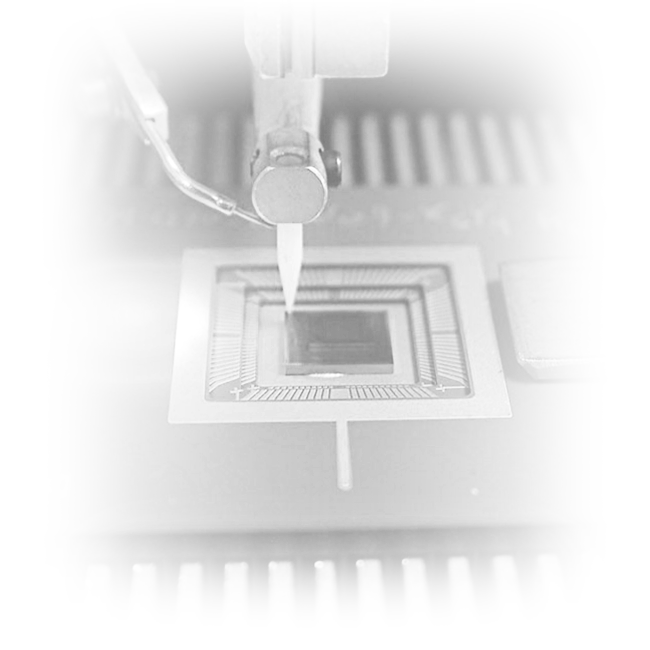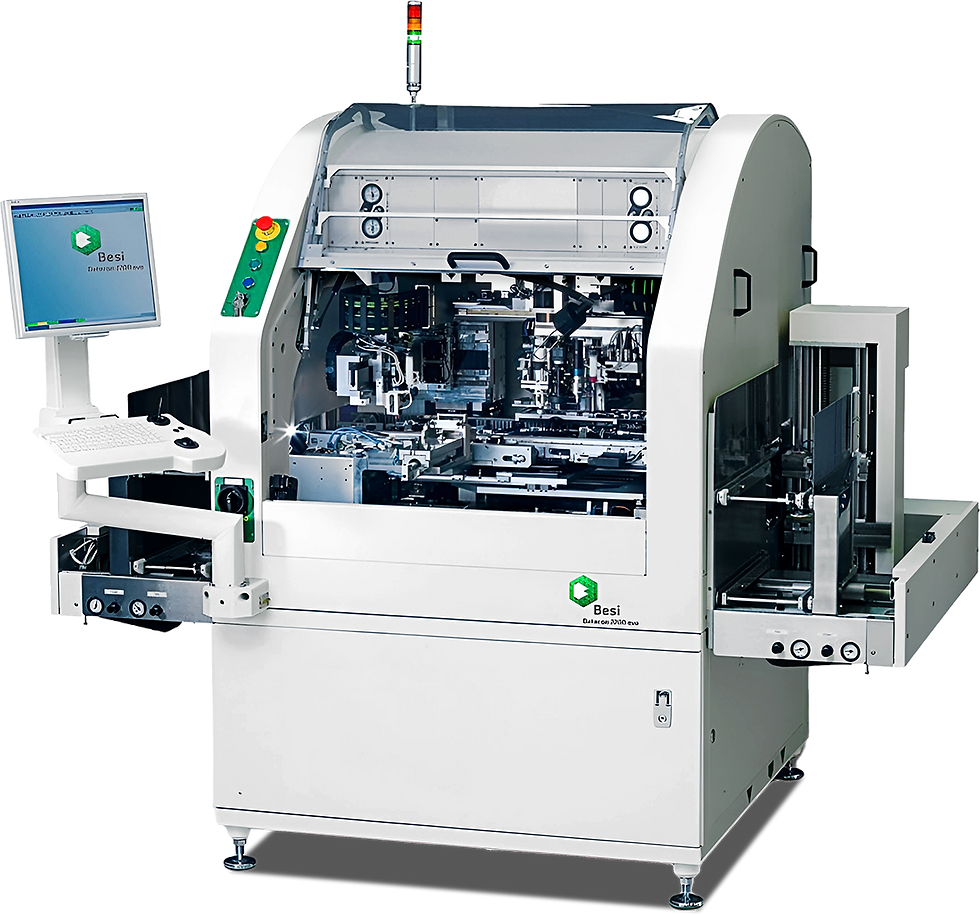



























PACKAGING SERVICES

Precision Wire Bonding and Die Bonding
American Dicing has 30+ years of experience with die bonding, wire bonding, and packaging.

Die Bonding
Die bonding, also known as die mounting, is the attachment of a die (or chip) to a substrate using an epoxy—conductive, non-conductive, or solder.
American Dicing uses automated die mounting machines with the following capabilities:
Multi-Chip
Die Attach
Flip Chip
Accuracy of 10µm
Dies sizes of 0.008” and Up
Wafer size up to 12”
Waffle pack, Gel-Pak®, and feeders



Wire bonding
Wire bonding is the process of creating the vital interconnection between components of the device to enable the reliable transfer of electrical signals.
American Dicing has several wire bonding options that meet your needs. We offer ball bonding, wedge bonding, and heavy ribbon wedge bonding using gold, aluminum, or copper wires.
Ball Bonding
Ball bonding is a commonly used technic where a ball is placed on each bonding pad with a wire connecting them. Ball bonds are multidirectional.
Our ball bonding machines can use wires ranging from 17.5 to 50 µm. The machines have a resolution of .25 µm and repeatability of < 2 µm.
Wedge Bonding
Wedge bonding is a unidirectional process that enables the bonding of pads that are closer together (fine pitch) and can have lower/shorter loop heights. The process can also use ribbons.
For our standard wedge bonding, we can use gold or aluminum wires from 17.5 to 75µm in size or a ribbon size of 30 µm x 12.5 µm to 250 µm x 25 µm
Additionally, we offer heavy ribbon-wedge bonding that uses aluminum ribbon sized from 500 µm x 75 µm up to 2000 µm x 300µm or copper wire from 300 to 500 µm.
Wire Bonding Material
We use gold (Au) or aluminum (Al) for most customers needing wire bonding. We also have experience with copper. Each material has advantages/disadvantages, as shown in the table. Please reach out to discuss which material is best for your needs.
GOLD (Au)
Advantage
Good electrical conductivity
High thermal conductivity
Disadvantage
Higher cost
SPECIFICATIONS
0.0007” to 0.003”
ALUMINUM (Ai)
Advantage
Lightweight
Cost Effective
Disadvantage
Lower thermal conductivity
SPECIFICATIONS
0.0007” to 0.025”
COPPER (Cu)
Advantage
Excellent thermal / electrical conductivity
Cost Effective
Disadvantage
Material can oxidize without protection

Packaging
Wire Bonding Evaluation
After assembly, we have wire pull and ball shear testing to ensure the wire bonding is successful.
Inspection
Before final packaging, our QA team inspects all wire bonding to confirm proper assembly. Our team can provide Inspection reports as required.
Encapsulation
Encapsulation protects the bare wires from damage or breakage from physical or environmental stress.Encapsulation services are provided with a glob top or epoxy seal. Glob top seal can be one-part/two-part or UV-curing, depending upon your needs.

Battery Bonding
We have expanded our wire bonding to battery capabilities in response to the industry’s increasing need for multi-battery cells.
We offer tab bonding. Unlike ab and laser welding, tab bonding uses a cold process that helps reduce battery degradation. Tab bonding can be used to connect serial battery cells or to connect the battery cells to other components.
Battery Schematics
Specifications
Die Mount
Goldball Bond or Wedge Bond
Goldball bonding (0.0007” to 0.003” wire)
Aluminum wedge bonding (0.0007” to 0.025”)
Glob top or epoxy seal
Die Sizes From .008" and up
Wire pull and ball shear test
Die placement accuracy within +/- .001" on all die
Machines
Datacon 2200 Evo.
F&S Bontec Wirebonders
Nordson EFD Epoxy Dispensers
ASM Eagle Extreme
SEC 3088
K&S 1488

